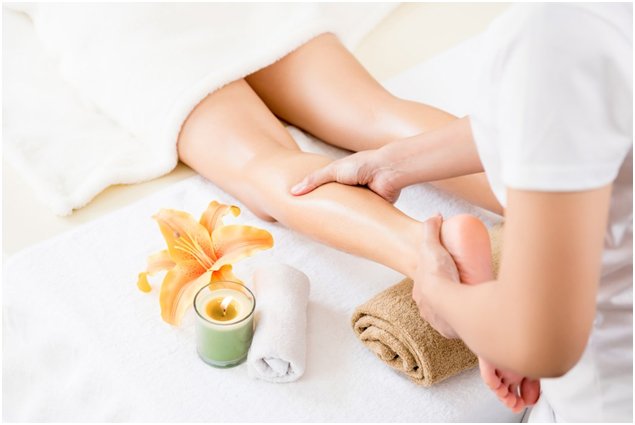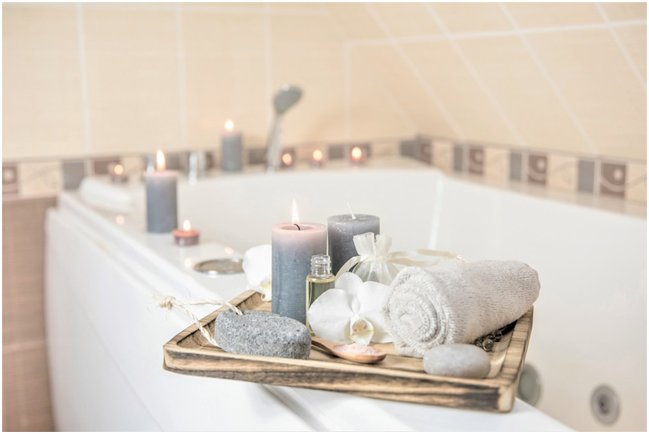
There are several methods for using essential oils, depending on the effect you want to achieve.
However, in more recent times, there has been much discussion about the different techniques that “English schools,” “German schools,” and “ French schools” use.
• Topical (external)
The English method involves applying essential oils well diluted in a carrier oil to the body to relax and reduce stress. This methodology was developed from Marguerite Maury’s work in England. Her techniques were designed to enhance the oils’ absorption and maximize their therapeutic benefits.
• Inhalation (environmental)
The German approach emphasizes the advantages of inhaling essential oils. They consider inhalation to be the most effective and rapid way to introduce essential oils into the body, as breathing them in allows you to bypass the skin or stomach.
• Oral (internal)
The French method involves using undiluted essential oils topically or ingesting them internally to produce a medical result.
Here, in North America, we follow the British School “Thought”.
Therefore, Mother Nature Essences does not recommend the internal use of any essential oil unless you have a clinical aromatherapy certification or are acting under the guidance of a trained professional aromatherapist.
Methods Of Using Essential Oils
MASSAGES
One of the most popular methods for achieving a sense of calm and peace is through aromatherapy massages.
So, whether seeking to alleviate stress, ease sore muscles, or unwind after a long day, an aromatic massage can be an effective means of self-care and promoting overall well-being.

A therapeutic massage aims to treat a health issue rather than simply helping you relax.
According to Health Canada regulations, the total concentration of the combined essential oils must not exceed 5%. (Topical Applications)
- Full Body Massage: Add 12-15 drops of your chosen EO/Synergy to 30ml of carrier oil. Hawkins, 2009
- Facial Massage: Add 3-5 drops EO/Synergy to 30ml of carrier oil—1% dilution. (Price and Price 2007)
- For Targeting Specific Areas (less than 10% of the body): Add 20-30 drops per oz (30ml) of carrier oil —5%. (Tisserand 1977; Price and Price 2007).
MASSAGES FOR THERAPEUTIC PURPOSES
Tui nai: This massage technique establishes a harmonious flow of Qi through the Meridian system, allowing the body to heal naturally. This therapeutic orientation is based on the Theory of Traditional Chinese Medicine.
Shiatsu: It comes from a Japanese massage modality adapted from Tui na. It is considered a form of bodywork where the therapist uses his thumbs and palms to pressure particular points on the patient’s body.
Ayurvedic: This technique stimulates the energy points through which the Prana moves. This type of massage helps eliminate toxins and rebalance cellular functions. Indeed, it is a combination of movements for toning and relaxation.
Methods Of Using Essential Oils
BATHS
Aromatic baths are a wonderfully synergistic combination to incorporate into our routine. They are beneficial for strengthening the immune system and treating skin diseases.
In addition, warm immersions with essential oils can relieve stress and anxiety, assist with muscle pains, or offer an exciting introduction to a romantic evening with your partner. However, essential oils with a high risk of causing irritation and sensitization should be avoided.
Aromatic compounds can be soothing and favourable to our emotional and physical well-being.

- Bathtub: Add 2-8 drops of undiluted essential oil with shampoo or liquid soap before adding it to the bath. Then, mix the water gently. For maximum benefit, remain in the tub for 10 minutes. Use two drops of undiluted essential oil the first time and increase by 1-2 drops to a maximum of 8.
- Zits Bath: Add 3-4 drops of EO to a washing-up bowl with warm water for 10 minutes (Price and Price 2007).
- Compress: Add 2-4 drops of pure essential oil to 500 ml of warm water. Add to a spray bottle and soak the compress. Apply the compress to the skin, and wrap it up with clothes or a towel. Leave for 2 to 4 hours.
Applying therapeutic compresses in specific body areas is a good practice.
Indeed, it is an effective way to treat sores, muscle aches, headaches, and bruises (compress can be used warm or cold or alternate between the two). For example, a warm compress is beneficial in treating chronic pain like backache, and a cold compress can help relieve acute injuries such as sprains.
Methods Of Using Essential Oils
INHALATIONS
Inhalations are the simplest method of using essential oils, an easy way to incorporate aromatherapy treatments into your daily routine.
Through this method, essential oils directly influence the mucous membrane of the nose and lungs, stimulating the olfactory system.

Inhalations are a valuable holistic tool in treating different respiratory tract diseases.
Although this method is handy in respiratory problems such as bronchitis, colds, or coughs, extreme caution is advised due to bronchial hyper-reactivity in asthmatics.
- Steam inhalations: Add 3-12 drops of undiluted essential oil to a bowl (1L) of steaming water or a facial steamer. Then, inhale slowly and deeply for 5 to 10 minutes. (Price and Price 1999; Tisserand and Balacs1995).
- Diffusing: Add 1-10 drops of undiluted essential oil to the water for humidifier use. Water diffusers are more efficient than vaporizers because no heat is involved. Additionally, water diffusers can help to add moisture to the air, benefiting those with dry skin or respiratory issues.
References
Beverley Hawkins, West Coast Institute of Aromatherapy Aromatherapy 201, 2009
Dr. Jean Valnet, The Practice of Aromatherapy, C.W. Daniel Co. Ltd, Saffron Walden, Essex, 1980
Salvatore Battaglia, The Complete Guide to Aromatherapy, The Perfect Potion (Aust) Pty Ltd, Virginia, Q, Australia, 1997
Shirley Price & Len Price, Aromatherapy for Health Professionals, Churchill Livingston, NY, 1995
Tisserand R, Balacs T. Essential oil safety: A guide for health care professionals. Edinburgh (GB): Churchill Livingstone; 1995.

